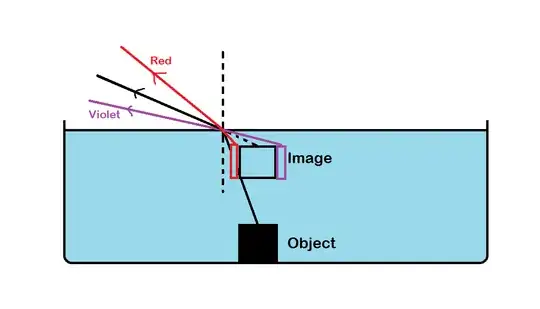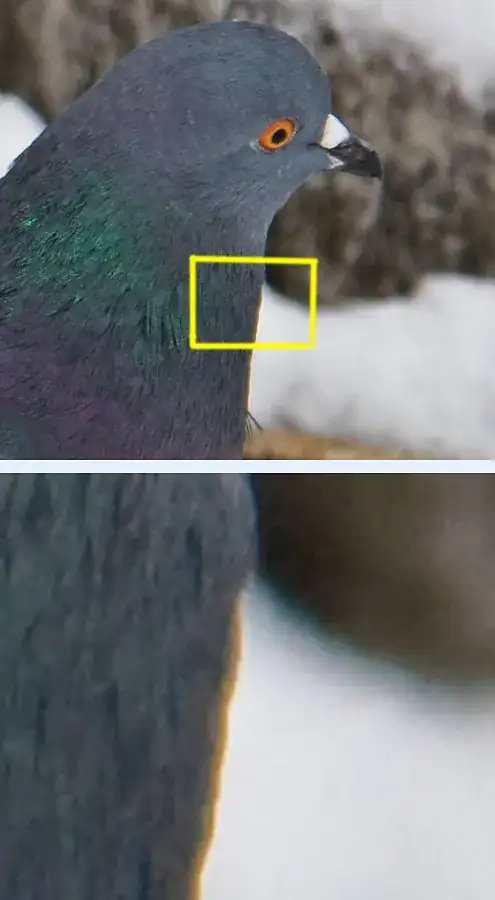I've noticed that in this outdoor swimming pool, the near and far sides of the black racing stripe appear blue and orange, respectively.

I've drawn some ray diagrams trying to rationalize this, but I can't get a satisfactory answer for why the light that experiences a higher index of refraction (blue) should appear on the near side of the black stripe, and likewise for red. Shouldn't the bottom of the pool emit light equally in every direction? If so, how can different sections appear as different colors? Sorry if the phenomenon isn't clear in the photo; if it isn't, just take my word for it.
My best guess is that, for whatever reason, light is preferentially emitted upward. So, that light is separated with blue hitting the bottom of my cornea and red the top. This feels wrong to me. Anyone have a better explanation for this dispersion?

